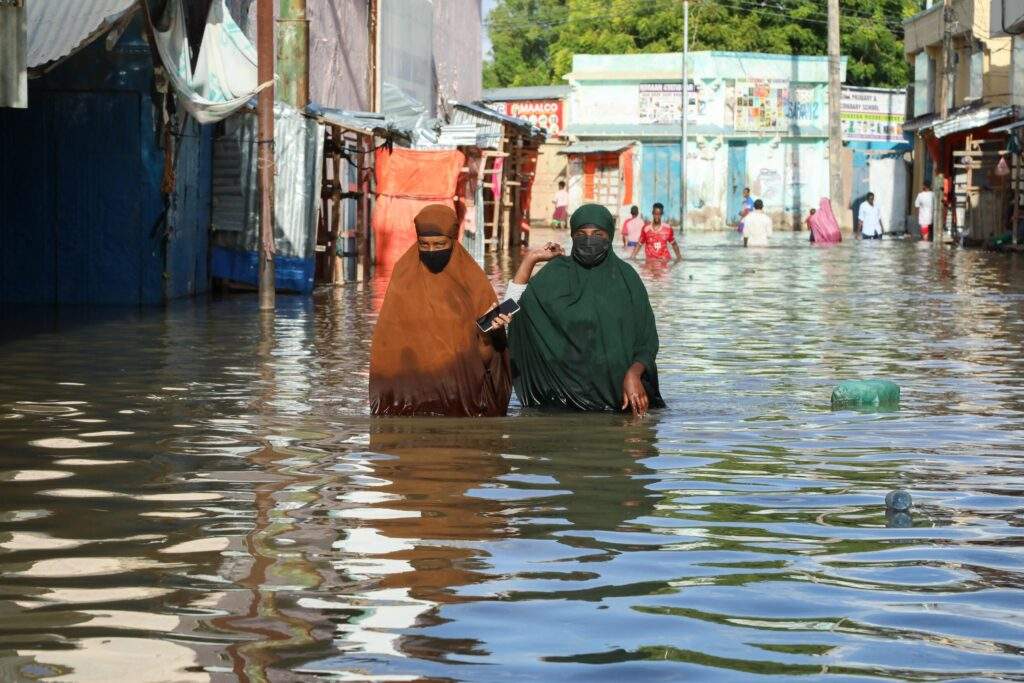Beledweyne, Somalia – Floodwaters surged through the Somali town of Beledweyne on Sunday, following heavy rains across East Africa that caused the Shebelle River to overflow its banks. The Shebelle River, a critical resource for the inhabitants of Beledweyne, turned into a source of devastation as the seasonal rains intensified.
The severe flooding has left numerous homes partially submerged, compelling many families to evacuate to higher ground. Footage from the town depicted streets inundated with floodwaters, forcing residents to seek refuge from the rising waters. Ali Abdi Yusuf, a lifelong resident of Beledweyne, reported that multiple neighbourhoods suffered significant damage due to the floods.
Before the deluge, the Somali government had issued warnings about the impending torrential rains, advising residents to move to safer, elevated areas. Despite these preemptive measures, the sheer volume of water overwhelmed parts of the town, illustrating the challenges in mitigating the effects of such natural disasters.
Beledweyne, located in central Somalia, has historically relied on the Shebelle River as a vital resource for agriculture, water, and livelihood. However, the town’s reliance on the river also makes it particularly vulnerable to flooding, especially during periods of heavy rainfall. The current floods underscore the broader issue of extreme weather events in East Africa, exacerbated by climate change, which continues to pose severe risks to communities.
The flooding in Beledweyne is part of a broader pattern of extreme weather events affecting East Africa, which includes not only heavy rains and flooding but also droughts and other climate-related disasters. These events often lead to significant humanitarian crises, including displacement, food insecurity, and health challenges.
